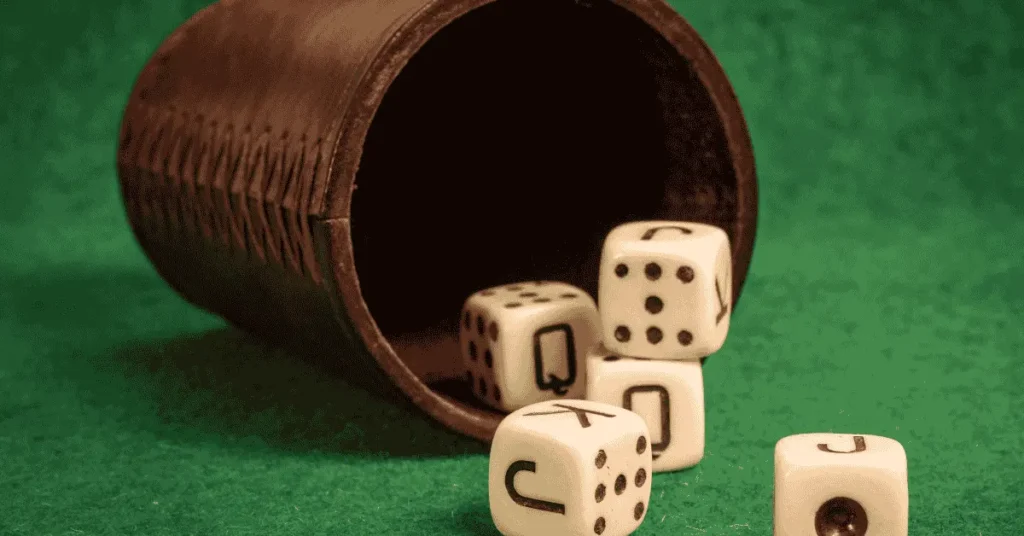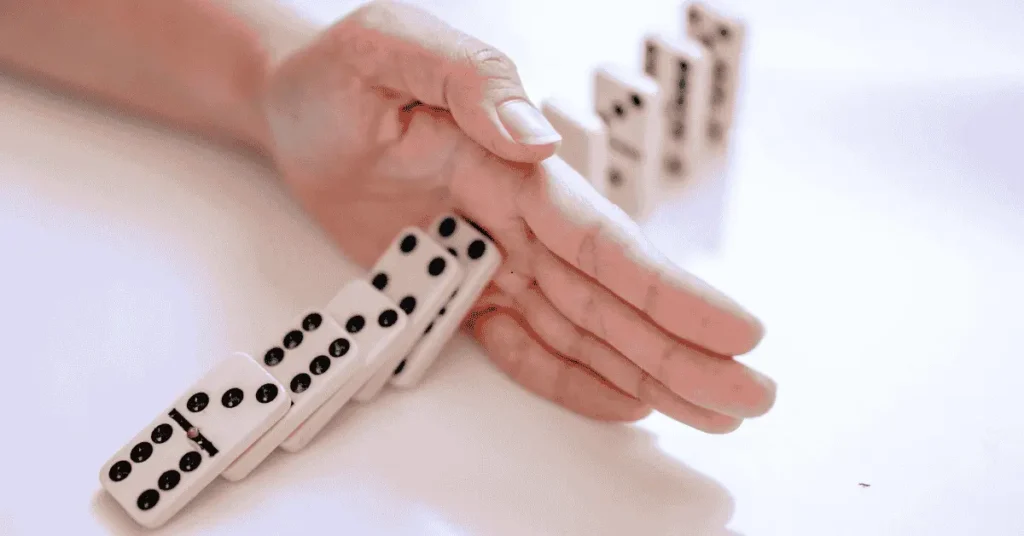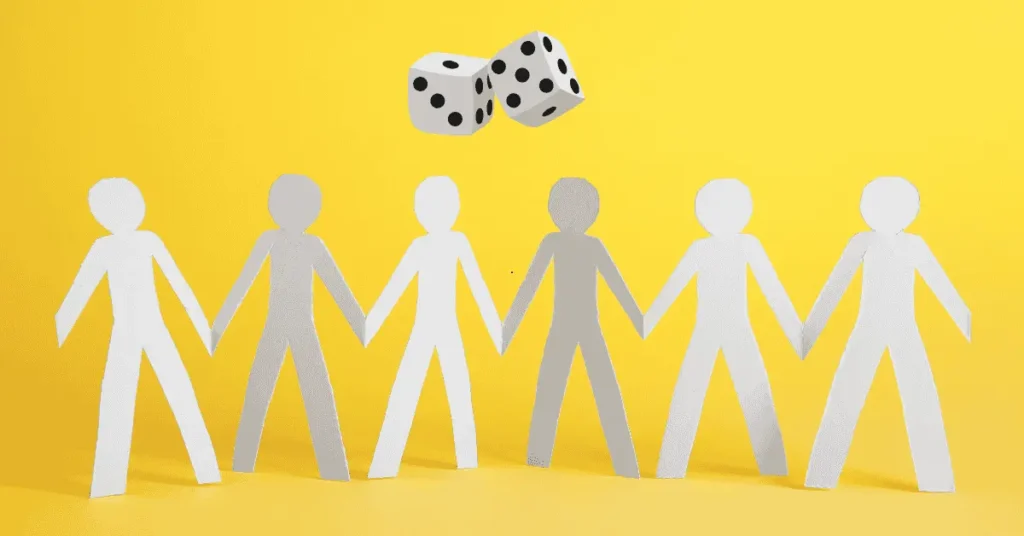Have you ever watched someone roll dice and wondered if they had a secret? Maybe they seem to get the numbers they need more often, or they just have a special way of throwing. The truth is, while luck plays a big part in dice games, there are simple things you can learn to make your rolls smarter and give you a better chance to win. This guide is for everyone, no matter where you’re from, to help you take your first steps toward dice rolling mastery.
Understanding Dice: Your Basic Tools
Let’s start with the very basics. A die (that’s what we call one of them) or dice (what we call more than one) is a small object, usually shaped like a cube, with numbers or dots on its sides. When you throw it, it tumbles and lands, and the number facing up is your result.
Most people know the standard six-sided die. It’s shaped like a cube and has numbers from 1 to 6 on its faces. But in some games, you’ll see dice with different numbers of sides. For example, a “d4” is a 4-sided die, a “d8” has 8 sides, a “d10” has 10 sides, and so on, all the way up to a “d20” which has 20 sides.
The “d” just stands for “die,” and the number tells you how many sides it has. When you roll just one die, the number facing up is your result. If you’re rolling many dice, you usually add up all the numbers that are facing up to get a total score. Knowing these basic tools is the very first step before you can use them well.
The Heart of Dice Games: Understanding Chance
This might sound like a math lesson, but don’t worry! Understanding chance (which is also called probability) is much simpler than it sounds, and it’s super important for playing dice games smartly. Probability simply means how likely something is to happen.
When you roll just one standard six-sided die, there are six possible numbers it can land on: 1, 2, 3, 4, 5, or 6. Each of these numbers has an equal chance of showing up. So, the chance of rolling, say, a 3, is 1 out of 6. This means that if you were to roll that die many, many times, about one-sixth of your rolls would likely be a 3.
Things get really interesting when you roll two dice. The chances for different totals change a lot. For example, let’s say you’re rolling two six-sided dice and you want to get a total of 7. You can get 7 in many different ways: you could roll a 1 and a 6, or a 2 and a 5, or a 3 and a 4, and so on.
There are actually six different ways to get a 7! But if you want a total of 2, there’s only one way: you have to roll a 1 on both dice (1+1). The same goes for a total of 12; you need two 6s (6+6), and that’s the only way. Because there are more ways to make a 7, rolling a 7 is the most likely outcome when you use two six-sided dice. Numbers like 2 and 12 are the least likely. This creates a kind of “hill” or “bell shape” if you were to look at the chances of each possible number. The numbers in the middle (like 6, 7, or 8) are much more likely to appear than the numbers at the ends (like 2, 3, 11, or 12). Knowing this simple idea helps you make much better choices in games. For instance, if a game needs a high roll, and you’re using two dice, you’ll know that aiming for a 7 or 8 is a much better bet than trying for a 12. This is how you start playing smarter by understanding the odds.
How to Roll: Techniques for Fair Play
You might think that rolling dice is just a random throw, and for the most part, it is! But there are small things you can do to make your rolls more consistent and fair, especially when you’re playing with others. These aren’t about cheating; they’re about making sure the dice tumble truly randomly, so everyone has an equal chance.
Most people just pick up a die, shake it a little, and then throw it onto the table. This is perfectly fine for many games. The main idea here is to give the die a good tumble. You want it to spin and bounce a few times so the result is truly random. If the die just slides out of your hand and doesn’t tumble, it might not be a fair roll.
Many games suggest using a dice cup. You simply put the dice in the cup, shake them well, and then pour or tip them out onto the playing surface. Shaking the dice in a cup makes sure they mix up completely, preventing anyone from trying to “set” the dice in their hand to get a specific number, which wouldn’t be fair.

For the fairest and most random roll, some people even use a dice tower. This is a tall structure with shelves or ramps inside. You drop the dice in the top, and they tumble down, hitting the shelves and bouncing off them before coming out the bottom. A dice tower removes almost all human influence from the roll, ensuring every roll is super random and fair for everyone playing.
The surface you roll your dice on also makes a difference. Many serious players use a dice tray or a soft mat (like a mouse pad material) to roll on. These surfaces are often lined with felt or a soft fabric. Soft surfaces stop the dice from bouncing around too wildly or making too much noise. They give a more controlled and consistent landing. Rolling on a hard table, on the other hand, can make dice bounce a lot, sometimes even right off the table! This can be annoying and make the game less smooth. The goal of all these techniques and tools is to make sure your dice rolls are truly random and fair. This way, everyone has an equal chance, and the game is much more fun!
Becoming a Dice Master: Your Action Steps
Now that you know about dice, understanding chance, and basic ways to roll, how do you put it all together to become a better player? It’s not about magic; it’s all about smart thinking and practice!
First and foremost, always read the rules of the game, and really understand them! This might seem obvious, but it’s the most important first step for any game. Don’t just start rolling without knowing what you’re doing. You need to understand how you win, what the different numbers mean in this specific game, and how your rolls affect what happens next. Sometimes a low roll might be exactly what you need, and other times a high roll could be bad! Knowing the rules helps you aim for the right numbers and make smart choices.
Next, try to think about the chances, even just a little bit. You don’t need to be a math genius or calculate exact percentages. Just remember the basic idea of the “bell curve” for two dice – that numbers in the middle (like 7) are more likely than numbers at the ends (like 2 or 12). This simple knowledge will guide your decisions when you have choices to make. For example, if a game lets you choose between rolling one die or two, and you need a very specific, low number, one die might be better. But if you need a number in the middle of the range, like a 6, 7, or 8, then rolling two dice might give you a better chance.
It’s also important to know when to take risks and when not to. Every dice roll involves some risk. You’re always risking getting a number you don’t want. Sometimes, taking a big risk (like trying for a very unlikely high roll) might pay off with a huge reward! But it could also lead to a big loss. Other times, it’s smarter to make a safe play – choose the option that has a much higher chance of working, even if the reward isn’t as big. Learning to balance these risks and rewards comes with practice. Before you roll, quickly ask yourself: “What’s the best possible outcome here? What’s the worst? And how likely is each one?”
Like learning any new skill, you’ll get better at dice games through practice, practice, practice! The more you play, the more you’ll start to feel how the chances work in real time. You’ll begin to remember which numbers tend to come up more often, and you’ll get quicker at making smart decisions under pressure. Don’t be afraid to try new games or different strategies; every game helps you learn and grow as a player.
When you’re playing with friends or family, take time to watch others play. Pay attention to the choices they make. Do their strategies seem to work well for them? You can learn a lot just by observing and, if it feels right, even asking them about their decisions.
Finally, and most importantly, have fun and don’t get mad at the dice! Remember, dice games always have a big element of luck. Even the very best players will have bad rolls sometimes; that’s just how dice work! The goal is to play smartly, make good decisions, and most importantly, enjoy the game itself. Don’t get discouraged by a few unlucky rolls. Focus on making good choices over time, and you’ll see your winning chances go up.
Your Journey Begins!
Dice games are exciting because they mix skill with a dash of chance, making every game a unique experience. By understanding how dice work, grasping the basics of probability, and using smart playing techniques, you’ll be well on your way to becoming a true dice rolling master. So, grab some dice, pick a game, and start rolling with confidence! The more you play, the more you’ll learn, and the more fun you’ll have along the way.
Don’t miss:



